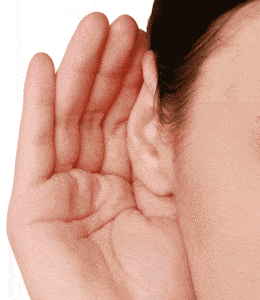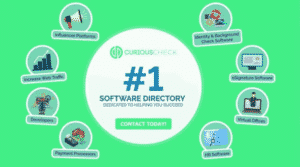There’s a big difference between announcing news…and making news. Here’s a concise primer on how to use a press release, distribution channels, and media pitches to successfully tell and deliver a story that gets seen and heard.
How to Write a Press Release When You’ve Got Something to Tell the World
A press release is still the standard way companies announce news: an earnings report, a major client win, a new product or location, an important company milestone, a key new hire, an acquisition, insightful findings from a sponsored survey. Cision’s 2021 Global State of the Media Report indicated that 78% of the journalists surveyed “look for press releases…to make their job easier.”
There are two essential elements in determining the outcome of your press release: how/where it’s sent, and how well it’s written. A third is luck (landing on the desktop of a reporter just at the right time), but that’s beyond the scope of this post, as is a how-to on writing one, as there are many perfectly fine places to find guidance online. I should note that it takes a good degree of craft to write one that will rise to the top of a reporter’s inbox. A how-to will take you on so far, just as a how-to on drawing a bowl of fruit won’t turn you into Cezanne …perhaps not the greatest analogy, as I don’t recall ever seeing a press release hanging in a museum. (Of course, we have PR pros on hand with specialized experience in your industry for a free consultation on how to write a press release that’s also optimized for the leading search engines.)
If you’re a new company, it’s usually your introduction to the reporters, bloggers, and analysts who cover your industry and give you public visibility. It’s also a way of maintaining engagement and staying top of mind with industry gatekeepers and tastemakers as your company grows. If you’re a more established company, pushing out a steady stream of press releases shows that you’re a company on the march.
The Competition for Eyeballs and Setting Expectations
That said, many companies make the mistake of expecting a press release to leap from the reporter’s overflowing inbox onto the pages of a major trade/business pub or influential blog. Yes, it does happen (see the CuriousCheck use case below) but bear in mind that there’s an 8 to 1 ratio of pr pros to reporters, which makes it harder for a typical press release to get a journalist’s attention. Few get past the headline, and most that do are dismissed as soon as the journalist bumps into the first string of vapid buzzwords. Your odds dramatically increase if you’re a name-brand company and/or have a stop-the-presses announcement to make. If you’re among the other 99.7% of companies looking to make news, you should view a press release as more a conversation starter than a closing argument.
What you’re really looking to accomplish with a press release is:
- Increase visibility
- Demonstrate you’re a company “on the march.”
- Give people visiting your website a “tick-tock” of your company’s “narrative” over the course of its history.
The next step is considering how and where to send your press release, which we cover in the next section.
How and Where to Send It: Press Release Distribution Channels
There are a number of ways to distribute your press release. We recommend you use all the channels mentioned below to maximize its exposure.
- BackBone, our partner PR firm, also maintains a comprehensive and up-to-date media database that they use to send directly to journalists, bloggers and analysts. The key is making sure the topic of the release matches the reporter’s beat (for instance, you don’t want to send a tech story to the Washington Post’s health desk).
- Today, social media channels are also very effective for disseminating news, particularly as a post or article over Linkedin, which can reach well beyond your business network. Twitter is also a valuable channel, as many reporters and analysts live there and is a fertile source for news.
- We also encourage all of our clients to consider emailing press releases to clients, partners, and business prospects. As a piece of legitimate news, it won’t be received as a typical promotional email; moreover, since they don’t typically receive press releases, it tends to get more attention than a standard email does.
- There are a number of distribution platforms or “wire services,” a term from the days when news items were sent via telegraph to newspapers, and later, to radio and TV. The most venerable wire services are BusinessWire and PRNewswire, whose services and prices you can compare for yourselves online. There are also a number of alternative services, which are more affordable but also more limited in scope but offer considerable value. Last year we did an evaluation of three alternative services, which we are in the process of updating. At a minimum, these services send your release to many high-authority news sites – Google and Yahoo News, to name just two, and many niche news sites. The press releases remain online in perpetuity, making them easily discoverable.
Pro Tip: Whatʼs the best day to send a press release in 2020?
The best day to send your press release is Tuesday, followed by Thursday, then Wednesday. The worst day to send your press release is on Friday (For obvious reasons) and Monday (The busiest day of the week). The best time to send your press release is early at 9 AM.
Why is a Press Release Important for SEO?
In addition to announcing news and (potentially) leading to actually making news, a press release can have significant SEO benefits.
- A press release lives online in perpetuity and will come up in organic search results.
- Pickup on high authority news sites improves SEO
- It can increase social media shares, which is factored into your ranking.
- It increases name recognition.
Following Up: How to Write a Media Pitch that Gets Attention
As mentioned, journalists value press releases as brand or company validation, and as a means of getting the relevance and authority of the pitch source. But it’s the pitch (that follows a press release) that sparks “earned” media coverage. I hasten to add that before you sit down to decide what you want to announce via a press release, that you know the difference between what is and isn’t newsworthy. A good many items that a company wants to tout are best pushed out in the company newsletter or over Slack (we can offer consultation on understanding the difference and saving you the trouble of sending out a counter-productive press release, i.e., one that will diminish your credibility with the reporters you’re trying to engage).
Competition for an editor’s attention is fierce, which is why it’s critical that each story being pitched has a unique angle, is timely, and is pegged to an emerging trend, new study, or item in the news. The pitch (also known as a “query”) must communicate quickly since editors typically read the subject of the query and the lead sentence to determine if it’s worth pursuing.
It’s also important that you know the reporter’s beat, what he or she has covered recently, even their editorial preferences (following a reporter on Twitter is a handy way of tracking this). It’s a pretty stiff challenge grabbing a busy editor’s attention when you have perhaps 35-50 words, tops, to do the job. Of course, having established relationships and a reputation for reliable and interesting story pitches go a long way. For a sampling of good and not so good pitches, visit this story on media pitching, Reporting from the Other Side: a PR Pro Gets Pitched
The Business Benefits of Effective Public Relations
Effective public relations is ultimately about positioning your company favorably against its competition. Success is based on your ability to create narratives that are compelling, credible, and timely. It requires consistency and persistence while being able to adapt your messaging to events as they unfold. Someone once said that PR agencies have intelligence in spades, what they lack is artistry. A strategic, “artful” PR program takes time to develop, and even the best-laid plans will require tweaking if not wholesale change. But the business benefits of targeted, sustained PR that generates steady “news” and timely, expert content are clear:
- Heightened visibility among your target audiences.
- Third-party validation of your market differentiators
- An “anchor” for content marketing initiatives; articles or mentions in “high authority” media sites improve search rankings
- New business opportunities.
CuriousCheck’s Press Release Use Case
For our first press release, we used eReleases. The package we chose was the Newsmaker for $399. You can now save $130 off eReleases going through the link. eReleases’ team did a fantastic job keeping us updated up to 30 days after.
Our story was published in 126 news outlets nationwide, with Yahoo News and MarketWatch having the highest domain authority. There is nothing better than Googling your business, clicking on news, and seeing your small business show up. After about a week, a high domain authority site, SmallBizTrends, contacted us to write an interview article. The best part is, that most journalists include a backlink, thus helping your Google rankings and authority. Bear in mind that this was accomplished without sending it directly to journalists, or through social media, or following up with focused media pitches. Had we done any of that, we could have expected far greater pick-up and exposure – but that was before our partnership with BackBone!
Related:
Capturing Buzz in a Bottle: Calculating Your PR ROI





















